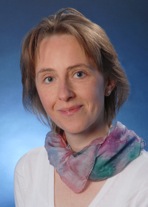President's Letter
 The European Society of Gene and Cell Therapy (ESGCT) is a leading organisation committed to support scientists and clinicians involved with basic and translational research on gene transfer and clinical applications of gene and cell therapy. Europe has long been at the forefront of such endeavours, thanks to the efforts of highly skilled and passionate scientists, the close collaboration within our scientific community, the constant involvement of many national centres of excellence in clinical care, the support of the European Union funding system, and the close attention of Regulatory Authorities at the national and EU level. ESGCT has always been proactive in facilitating scientific exchange, disseminating knowledge and increasing the awareness of gene and cell therapy among scientists and the society at large through its Annual Congress and numerous interactions with other societies, funding organisations and regulatory bodies.
The European Society of Gene and Cell Therapy (ESGCT) is a leading organisation committed to support scientists and clinicians involved with basic and translational research on gene transfer and clinical applications of gene and cell therapy. Europe has long been at the forefront of such endeavours, thanks to the efforts of highly skilled and passionate scientists, the close collaboration within our scientific community, the constant involvement of many national centres of excellence in clinical care, the support of the European Union funding system, and the close attention of Regulatory Authorities at the national and EU level. ESGCT has always been proactive in facilitating scientific exchange, disseminating knowledge and increasing the awareness of gene and cell therapy among scientists and the society at large through its Annual Congress and numerous interactions with other societies, funding organisations and regulatory bodies.
These are exciting times for gene and cell therapy. New generations of vectors have entered the clinical arena to show improved efficacy and safety. This has allowed scoring remarkable advances in the treatment of some inherited retinal diseases, hemophilia, immune-hematological and storage diseases as well as some types of cancer. Long-term safe and stable replacement of a previously missing or novel gene function is now within the reach of our clinical testing. The observed clinical benefits are increasingly supported by in-depth molecular follow up of human patients conducted with powerful new technologies, which are providing unprecedented insights into complex pathophysiological processes, such as stem cell activity, tumor progression and the deployment of an immune response. Scientists have shown the potential of vector engineering to modify their tissue tropism and refined the genetic design of integrating vectors to increase safety and improve regulation of transgene expression. A novel generation of T-cell engineering strategies is showing the therapeutic potential of adoptive therapy in cancer patients. At a time when few novel conventional drugs have entered the market, the first gene therapy product has been proposed for market registration at EMA for the treatment of severe lipoprotein lipase deficiency. However, despite these important advances, it is clear to our community that much still needs to be done in order to achieve stringently regulated expression of therapeutic transgenes, correction rather than replacement of malfunctioning genes, targeted delivery and lower toxicity of vector administration, reduced immune activation and induction of tolerance to the transgene product, improved engraftment of transplanted cells and tissue regeneration.
We look forward to the recruitment and contribution of novel apprentices to our discipline as our science continues to be inspired by emerging concepts from the fields of stem cell biology, transplantation and tissue regeneration, immunology and pathology, as well as by a deeper understanding of the structure and function of the human genome and epigenome. Our studies may not only benefit from these advances but actually contribute novel findings to them. We should revitalise scientific exchange with virologists, who first span off our discipline, and attract molecular geneticists, who may provide a new perspective to our findings while we challenge their consolidated views, and developmental biologists. Stem cell reprogramming has lately taken from us the promise of forging tomorrow's new therapies in the common people's view, a responsibility not to be envied. The recent Nobel Prize to prof. Gurdon and Yamanaka has highlighted the impact of this discovery. Yet, it is likely that we will soon join forces with this exciting field still in its infancy, as soon as more investigators pursuing stem cell reprogramming and differentiation embark into in vivo and translational studies.
As we are chartering the road to clinical development of new therapies we must also educate ourselves to deliver medicines and not only science. Gene therapists are often scientists with a basic biology background and not clinicians. This may lead them to unrealistic expectations of the measure of success of a novel therapy. Most successful drugs are relatively target unspecific and often give rise to serious and sometimes fatal side effects. Successful stories in drug development have often seen progressive improvements in efficacy and tolerability as new generations of the lead compound enter clinical testing. Gene therapy will likely experience a similar course. What enters the clinic today is probably already outdated in the laboratory, yet this should not stop clinical testing unless alarming toxicity comes about. We must improve our therapies by a virtuous cycle going from the bench to the bedside and back. At the same time, as we open new avenues and introduce radical new strategies in humans, we must be exceptionally wary of unexpected toxicity and exert utmost care in the design of relevant preclinical studies and select diseases providing an appropriate risk-benefit ratio for the first human testing of such new types of treatment.
Whereas the recent successes have revived the interest of the research and clinical communities for our science, our efforts still deserve more attention in scientific education, generalist journals, funding agencies and the society at large. Besides remarkable clinical achievements, the overall contribution of gene therapy to the advancement of experimental biology and biomedical sciences well exceeds its current perceived status. The development of powerful technologies for efficient and safe gene transfer with minimal impact on target cell biology, regulated transgene expression and precise genome editing are just some examples of our legacy to the daily work of countless investigators and laboratories. From the society perspective, positive clinical results are the most relevant outcome of our efforts but the clinical aspects of any gene and cell therapy application will have to be reviewed within the pertinent clinical communities and will eventually merge with other approaches to constitute its own therapeutic armamentarium. Our specific expertise is in the development of novel tools and strategies to replace genes and cells in diseased tissues, in the design of appropriate preclinical models to stringently assess their efficacy and safety and in chartering the roadmap to clinical translation. This is our unique heritage and the realm that we must nurture.
We must commit to a continued revision of the regulatory framework for preparing and conducting clinical trials of gene and cell therapy. This remains a challenge from the scientific and regulatory viewpoints and a key action for the Society, which is called to work closely with Regulatory Authorities to update the requirements and overcome the roadblocks imposed by conventional preclinical testing methods when unfit for the specific design of gene and cell therapy. We should also look towards easing any unnecessary burden on the road to clinical translation, in particular when dealing with rare diseases that may limit availability of financial resources. Yet this should not come in the form of shortcuts that may compromise the safety or impact quality standards. On the other hand, as gene therapy is finally coming of age we welcome an increasing involvement of the pharmacological industry with our field. Only through a close engagement with industry we can orchestrate regulatory adjustments and make our therapies a clinical reality.
Most of the above will depend on the work of all our Society members, but the Board and its Presidency may help fostering some changes by nurturing exchanges with scientists from other fields, stakeholders from the industry, patient organisations, journal editors, and regulators. These are difficult times of economic crisis and research is at high risk throughout the world. Yet, we all know very well that only increasing knowledge and free exercise of research will promote new advances that may eventually solve global problems. We must be active and vigilant against the risk that science budgets at the national and supranational, EU level take too heavy cuts.
I would like to invite all researchers in basic science and translational medicine, clinical colleagues and representatives from industry, regulatory agencies, funding bodies and patient organisations with an interest in the development and applications of gene transfer, gene editing, cell therapy and transplantation to join ESGCT as active members and to participate in our Annual Congress. As active members of the research community supported by ESGCT it will be easier to develop these strategies into effective new treatments to alleviate human inherited and acquired diseases.

Hildegard Büning
President ESGCT